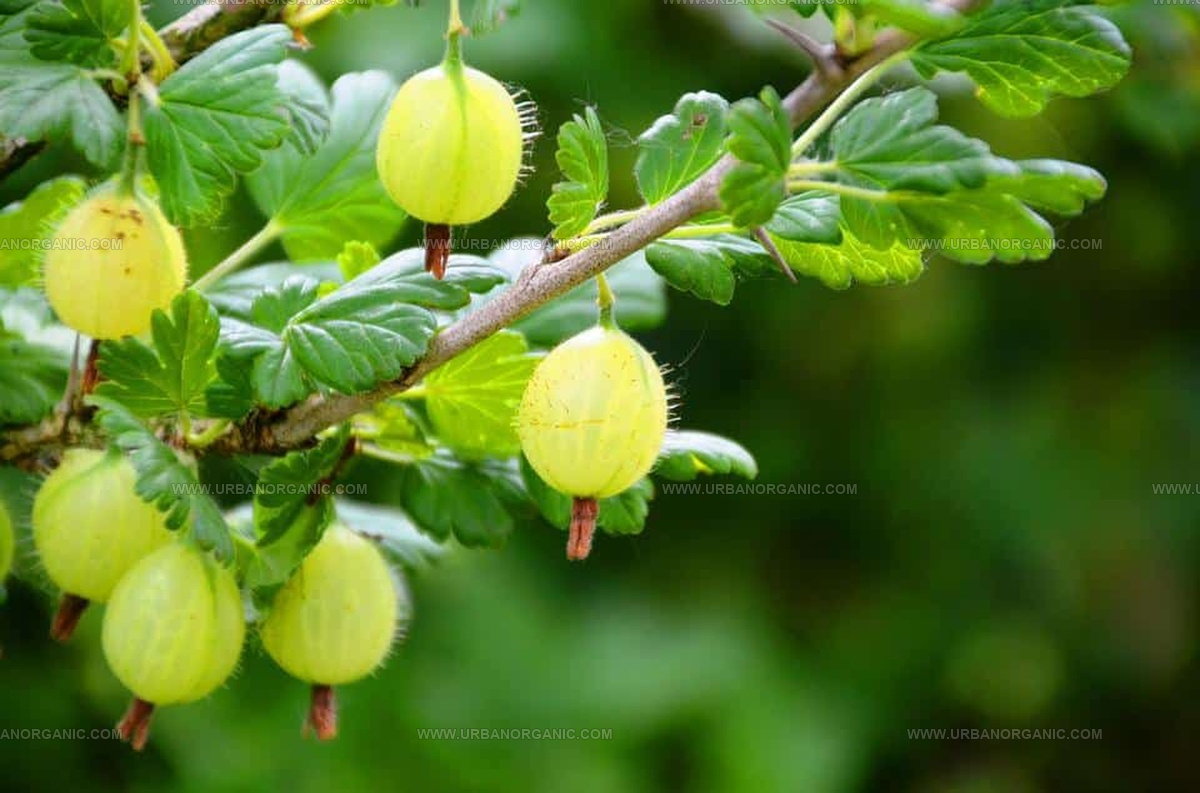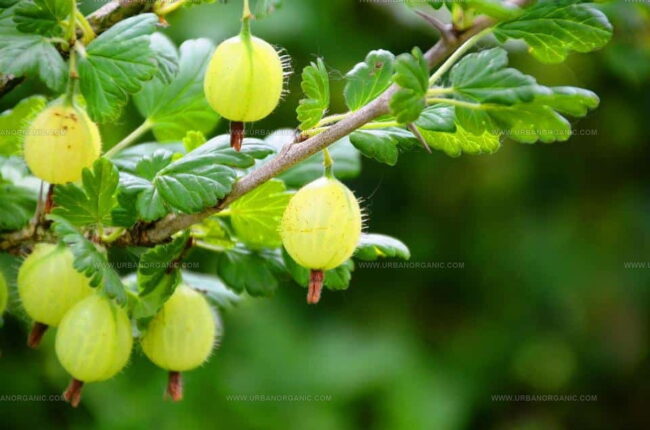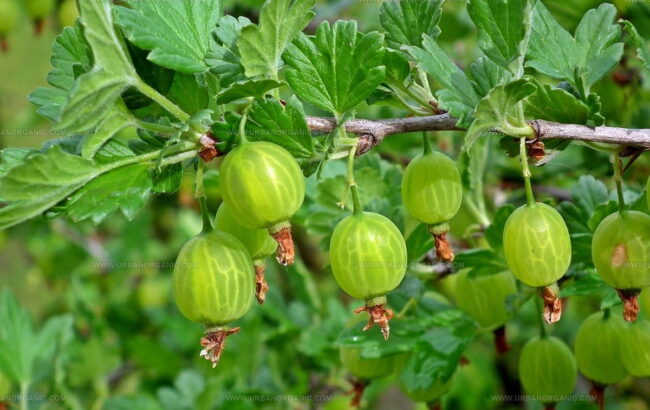What Do Gooseberries Taste Like? Tart Gems with a Sweet Secret
Gooseberries might seem like an obscure fruit that few people know about, but these small, unique berries pack a surprising punch of flavor.
Curious food enthusiasts often wonder about the taste profile of these intriguing little fruits that grow in various regions around the world.
Some people encounter gooseberries in farmers markets or specialty grocery stores and feel hesitant about trying something unfamiliar.
The color and appearance of gooseberries can range from bright green to deep purple, which adds to their mysterious culinary appeal.
Depending on their ripeness and variety, these berries offer a complex taste experience that surprises many who sample them for the first time.
Nutritionists appreciate gooseberries for their potential health benefits, making them more than just an interesting conversation piece.
If you are looking to expand your fruit knowledge and palate, understanding gooseberry flavor nuances could be your next delicious adventure.
What Are Gooseberries?
Gooseberry bushes produce tasty berries that come in two main types: European and American.
People sometimes mix up these berries with other fruits called gooseberry, like cape gooseberries and Chinese gooseberries.
However, those other fruits are not true berries in the plant world and are different from what we call kiwi.
Gooseberries pack a punch of flavor with their mix of sour and sweet tastes.
They shine bright in the health world because of their rich vitamin content.
Just one serving gives you half of your daily vitamin C needs.
These small fruits make a perfect snack for health-conscious people.
Packed with fiber and super low in calories, gooseberries help people who want to watch their weight.
Their low-fat profile makes them an ideal choice for anyone looking to eat well without feeling guilty.
Gooseberries Flavor Guide
Small berries called gooseberries offer a unique twist on sour flavors.
These little fruits show up in shades like gold, green, and red, with a taste similar to tart grapes.
Gooseberries balance between savory and sweet, hitting notes that mix lemony sharpness with hints of tropical fruit.
Each small berry brings a zingy, zesty punch to snacking.
Berry skin stays smooth and tight, much like grape covers.
Thin outer layers make munching easy.
Biting into a gooseberry feels just like squishing a cherry tomato, with soft insides that splash juice across your mouth.
Gooseberry Taste by Color
Gooseberries come in several colors, and each color brings a different taste experience:
What Do Gooseberries Look Like?
Gooseberry bushes grow as prickly plants with leaves grouped in threes to fives and tasty fruits in different shades.
Flowers look like little bells with reddish edges and smaller white-yellow petals.
Fruits have stiff pointy hairs and typically show a yellowish-green color.
Some farmed types can produce dark red berries.
Gooseberry fruits range from big to small.
Sharp thorns cover the plant stems.
Fruits shine with bright colors and lots of juice.
People can find gooseberry fruits in yellow, red, green colors with different looks like fuzzy, smooth, round, egg-shaped, or pear-like forms.
How Are Gooseberries Unique?
Gooseberries might look like grapes, but they pack a unique punch of flavor.
People often compare these little fruits to sour grapes with a sharp tang.
Their taste reminds folks of citrus, apricots, cranberries, and even bananas.
Small hints of tropical notes dance around, making gooseberries a delightful treat.
Soft and pulpy describes their texture perfectly.
Seeds inside can be tricky to chew, so people need to be careful.
Gooseberries should never feel mushy when you eat them.
Growing them right helps make them more enjoyable.
Grape-like in appearance, these fruits stand out with their sour and tangy taste.
Some people love eating multiple gooseberries as a quick snack.
Different varieties offer slightly different flavor profiles.
One serving can satisfy hunger or provide a quick burst of taste.
Currants share some family connections with gooseberries, though they aren't exactly the same.
Gem-like in their appearance, these fruits shine when ripe.
Sweet and tart flavors burst from white and black versions.
Each cup contains about two tablespoons of these small, interesting berries.
Types of Gooseberries
Gooseberries come in many styles and tastes.
People enjoy eating them plain or making sweet treats.
Some berries look green with clear lines running through their skin.
Other berries turn red or yellow as they grow older.
Snacking on raw gooseberries works well, and cooks often use them for making preserves.
People who prefer sweeter flavors should pick ripe berries from local markets.
Ripe gooseberries have deeper flavor and more natural thickening agents for cooking.
Types From Europe
Wild gooseberries from Europe originally came from North Africa and mountain regions near the Caucasus.
These berries share genetic roots with American types but pack more taste and size.
European varieties often grow as big as tiny plums, though most measure around one inch long.
Berry surfaces might feel smooth, bumpy, or covered with small prickles.
Colors range from white and yellow to red and deep purple shades.
Gardening experts suggest Hinnonmakis Yellow as particularly delicious for anyone wanting a stellar gooseberry experience.
Types From The Americas
Northeastern United States hosts native gooseberry plants called American gooseberries.
Compared to European types, these berries grow smaller with less appealing flavors.
Glendale stands out as a specific variety with strong adaptability to sunlight conditions.
Plant experts designed this version to thrive in warmer regions like Mediterranean zones.
European gooseberry types remain more popular since they can successfully grow across different climate settings.
Are Gooseberries Safe to Eat?
Gooseberry berries are safe to munch on.
No proof exists showing they cause harm.
Our whole clan loves these little fruits... Still, people should watch out and not eat too many gooseberry leaves.
Gooseberry plants have thorns, but scientists haven't found any dangerous parts.
Sharp gooseberry thorns won't kill you, though they might leave scratches.
Problems can happen when tiny plant pieces get stuck in wounds.
These spots might swell up and hurt, causing plant thorn arthritis.
Doctors could mistake this condition for poisoning, which means people might need medical help.
Safety matters, so wear thick gloves when picking these prickly berries.
How to Keep Gooseberries Fresh
Keeping gooseberries fresh matters when you want to enjoy them later.
Several storage methods work well for these tasty berries:
Kitchen counter works best for quick snacking.
People who plan to eat gooseberries within a day or two can leave them out.
Just know they will spoil faster when sitting on the counter.
Refrigerator storage helps extend berry life.
Washed gooseberries typically last two to three days in cold storage.
Unwashed berries might survive about a week in the fridge.
Freezer keeps gooseberries good for months.
Berries can be frozen on a tray before packaging.
Another option includes packing them in simple syrup or sugar.
Canning preserves gooseberries for almost a year.
Sealed containers protect the fruit and keep it edible for several months.
Drying provides another preservation method.
People can steam, cut, and spread berries to dry completely.
Dried gooseberries stay good in the pantry for six months.
Freezing works for longer storage.
Bringing dried berries back to life simply requires adding water.
How to Eat Gooseberries
People often munch on gooseberries straight from the plant.
Small green or red berries pack a tangy punch, but their sour edge comes with soft sweet notes that make them pleasant to eat.
You can quickly toss a few berries into your salad or enjoy them by themselves.
Gooseberries work well in many dishes.
Bakers love making pies, crisps, crumbles, and tarts with these berries.
Gooseberry jams and jellies line pantry shelves everywhere.
Chefs mix them into salad dressings or shake them into cool drinks.
People use these little berries in so many different ways.




Michael Thompson
Founder & Culinary Director
Expertise
Classical & Contemporary Cooking Techniques, Global Cuisine Appreciation, Nutrition & Menu Engineering, Sustainable Cooking Practices, Farm-to-Table Cuisine
Education
Southwestern Oregon Community College
Michael grew up in Oregon, where he learned early that food tastes better when it’s fresh, local, and made with care.
After earning his degree from the Southwestern Oregon Community College, he focused his career on teaching others how to cook with the seasons, reduce food waste, and reconnect with what’s on their plate.
Michael keeps his cooking simple, sustainable, and full of flavor. His favorite part of the process? Watching people realize how easy and satisfying it can be to cook a single great meal from scratch.